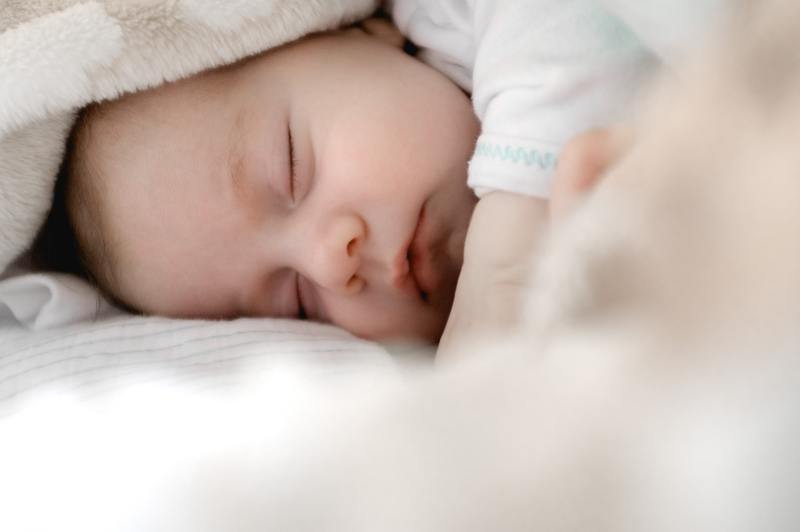One of the things that parents might be overthinking about is the question of what can mold do to a baby. Like their breeding grounds, molds are not picky on the people it might physically affect. This is why it will not spare your babies regardless of their cute gestures.
This guide will upgrade your hands-on trait whether you are a mother, a babysitter, or just simply someone who cares about the well-being of babies. You can now ease that crease in your forehead as you go through this comprehensive information.

Delving Through Molds
Prior to knowing the effects of mold, you first need to know its basic information. This area of knowledge includes the appearance of molds. For starters, it usually comes in circular shapes with either a furry or slimy texture.
It also appears in a range of colors such as white, green, and brown. Others come with shades of orange and pink. However, the most notorious of all is the black one as it is commonly associated with toxicity.
Molds do not have much criteria on their breeding grounds. It only requires moisture and humidity in its environment to thrive. It can also grow both in visible spots and be hidden in plain sight.
Because of mold’s ability to grow in concealed areas, it can come in handy to know how to distinguish its smell from other home contaminants. When you spot a musty or earthy smell that can be compared to a decaying matter, that is definitely a mold you should get rid of right away.
Effects Of Mold To Babies
Babies may not be necessarily immunocompromised, but they are at the phase where their immune systems are still developing. So, even the minor amount of mold spores suspending in the air could cause respiratory problems and trigger allergic reactions on them.
This article can give starters a definitive guide on how long can mold spores stay in the air. If you spot one, you can also learn how to get rid of mold spores in the air so you can prevent the following effects from happening on your baby.
1. Mold allergy
The first time that a baby sneezes, coughs, or gets a runny nose, the reason may not be blamed entirely on molds. However, if it is continuous, it may be attributed to the baby’s exposure to a mold-infested area.
Allergic reactions unfortunately do not stop with the aforementioned symptoms. Babies may also experience skin irritation mostly in the form of rashes. This reaction is apparently out of the question when the baby has physical contact with the mold.
If you are suspecting that mold exposure is causing allergic reactions to your baby, consult a pediatrician for the necessary steps to take. Do not try to do anything without the signal of any health experts.
2. Respiratory issues
Mold growth could also lead to the emergence of respiratory issues such as pneumonia, bronchitis, and croup. The mere inhalation of mold spores, particularly the black ones, could expose babies to toxic substances such as mycotoxins.
Mycotoxins, for the record, can be detrimental to the health of babies as it might cause pulmonary hemorrhage. Even when they can survive its adverse effects, the possible consequences of inhaling mycotoxins might likely follow for the rest of the baby’s lifetime.
This information is the main reason why homeowners should regularly check for mold growth. This can lead to unimaginable scenarios especially to those who have immunocompromised people within their households.
If molds have infested your air conditioning systems, it can increase the chance of your baby having hypersensitivity pneumonitis. Although it almost bears the same name as pneumonia, it cannot be cured by antibiotics.
Although this condition is more commonly observed in adults than children, there are symptoms you have to be well-aware of. This condition is chiefly characterized by shortness of breath, cough, muscle aches, tiredness, fever, night sweats, and occasional weight loss.
3. Gastrointestinal conditions
Exposure to mold contaminants could also affect the digestive tract of babies. This incident might eventually lead to the occurence of diseases such as diarrhea, vomiting, and nausea.
It may even go to the extent where they lose their appetite even in the presence of mouth-watering food. The worst effect of mold in the digestive system of babies is the bleeding of the intestinal tract and the intestinal cramping.
Like the other cases of mold exposure, it is important to inform pediatricians about this kind of situation. Seeking professional help is the first and foremost step in alleviating the pain that your baby is experiencing.
No matter what type of mold you are dealing with, it is also essential that you keep yourself safe in order to not pass the health effects of mold to a baby. Follow safety precautions by cladding yourself in gloves, goggles, N-95 masks and P-100 respiratory protection.
Even when you have worn these safety gears, make sure to still wash your hands before coming in contact with a baby. If you think the amount of mold in your home is too large for you to handle, leave the task to a mold remediation specialist.
Conclusion
Merely answering the question of what can mold do to a baby can definitely do wonders. It does not only make babies safe, it can also prevent you from an unexpected spending of fortune on medical treatments.
